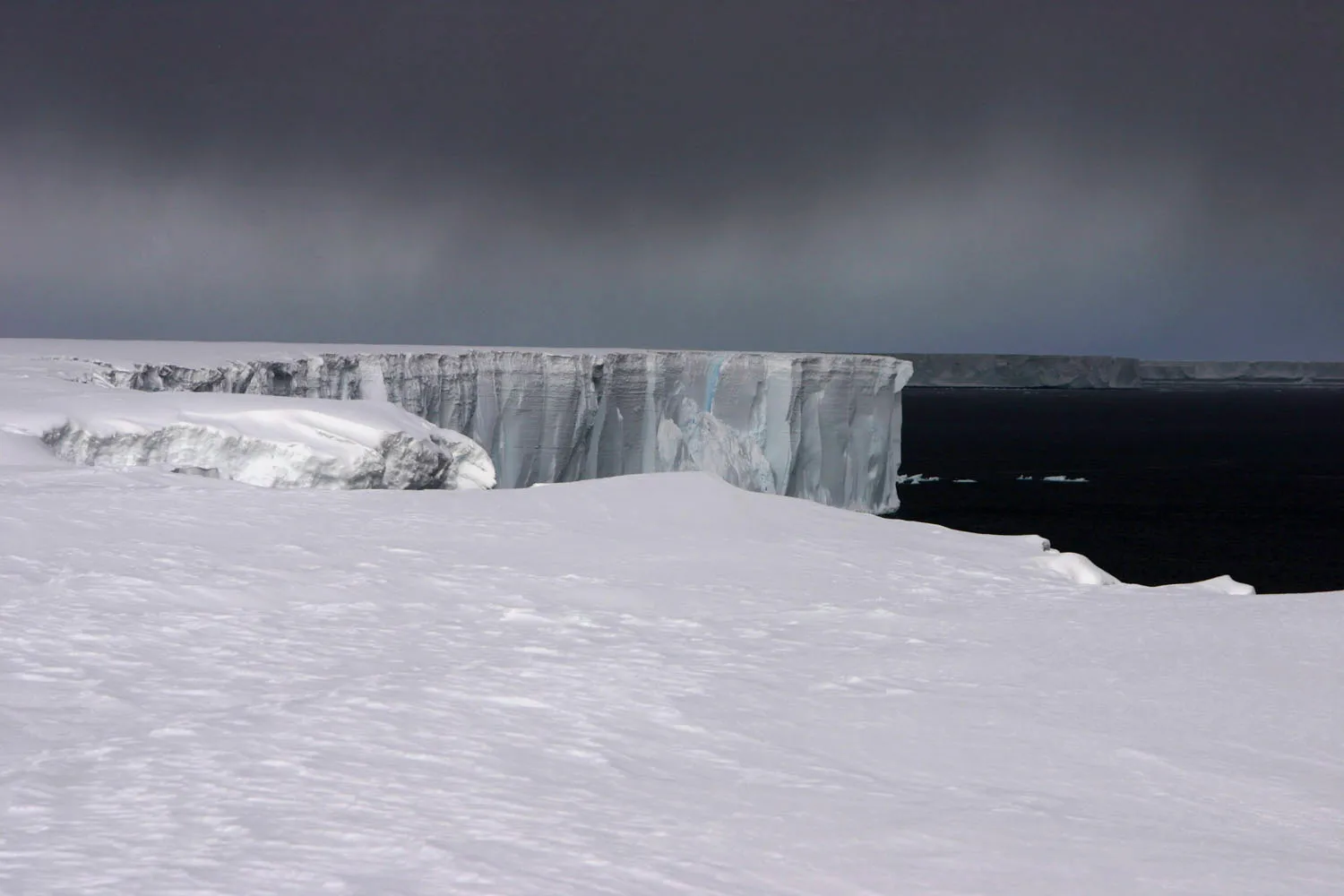Iceberg - B15K
Back to gallery | Back to Thumbs | Previous | Next
As stable and enduring as they may appear, tabular bergs do eventually break up. Initially they break into several smaller tabular bergs usually along crevasses and fault-lines that they acquired when part of a glacier or ice shelf. Eventually when their height matches or beats their length or width, they can become upended and become an irregular ice berg, eroding and reducing in size slowly as they are swept around Antarctica in the ocean currents, or maybe getting caught up in a north-flowing current where they are rapidly melted by warmer waters.
Large tabular bergs are routinely tracked by satellite for years as long as they are big enough to be spotted. It can take more than a decade for a large tabular berg to get to the point where it is no longer tracked. The remaining irregular bergs can then take several more years before they disappear.
Photo; © Mike Usher - Pictures from an icebreaker cruise to Eastern Antarctica.

